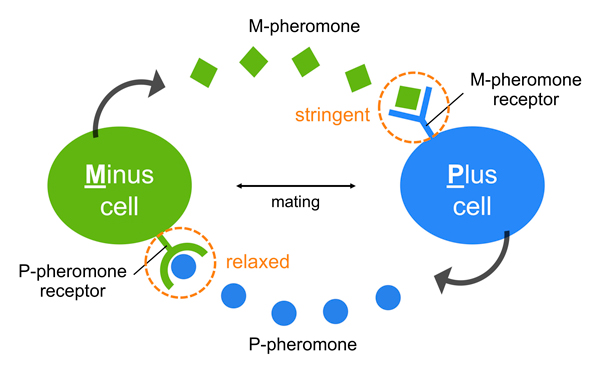How sex pheromones diversify: lessons from yeast
Press release
Asymmetric diversification of mating pheromones in fission yeast
Taisuke Seike, Chikashi Shimoda, Hironori Niki
PLoS Biology published 22 Jan 2019 DOI:10.1371/journal.pbio.3000101
Press release (In Japanese only)
Many organisms including insects, amphibians and yeasts use sex pheromones for attracting individuals of the opposite sex, but what happens to sex pheromones as new species emerge? Our research group studies sex pheromones in the fission yeast Schizosaccharomyces pombe, revealing an “asymmetric” pheromone recognition system (Figure) in which one pheromone operates extremely stringently whereas the other pheromone is free to undergo a certain degree of diversification, perhaps leading to a first step towards speciation. Our findings contribute new insights into the evolutionary mechanisms underlying the diversification of pheromones. Organisms might have such systems for creating new versions of pheromones, allowing them to persist enough long in a population to evolve adaptations of receptors. Before a mutant is completely lost, a second suppressor mutation may occur to recover the first defect. Thus, the coevolution of pheromones/receptors can proceed step-by-step.

Figure: An asymmetric system of pheromone recognition in fission yeast
The specificity of M-pheromone is extremely stringent, whereas that of the P-pheromone is relatively relaxed; therefore, the diversity of the two sex pheromones might facilitate asymmetrically in nature, perhaps as a first step toward speciation in S. pombe.















